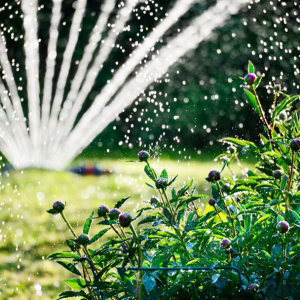Tasks for summer
Summer brings with it the usual tasks, and although these tasks can seem tiresome they are most essential in the overall upkeep of our gardens.
Watering is without a doubt the top of the list. Garden beds require a good soaking at least every seven to ten days using a sprinkler and not a hand held spray. Watering with a hand held spray is basically just a waste of this valuable resource; invariably the surface just gets a wetting and water does not reach the feeder roots of the plants thus encouraging a shallow root system. In periods of extremely dry conditions, plants with shallow roots dry out very quickly and place the plant under stress even leading to death.
Similarly with lawn watering, it is best to deep water a couple of times per week to encourage deep rooting of the grass. This again will help to prevent the grass drying out.
As I write this article, the summer so far has been extremely dry and much care should be taken in giving the plants a drink before they start to stress. I have heard many say how good the rain was in recent times but unless we have had at least a day of good soaking rain then generally it is not enough. A light, one-millimetre shower of rain does nothing for the garden but wash the dust off the plants.
Maintenance of plants is another task that you can take care of during the mid-summer period.
Dead-head roses and give them a light application of rose food. This will encourage new flowering wood for an autumn flush and also assist in the prevention of summer pests and diseases. You can take care of diseases like black spot and powdery mildew with a rose fungicide and control insect pests like aphid with a systemic insect spray.
Practices like watering roses in the early morning and placing the sprinkler so there’s no overhead watering will also help prevent fungal diseases.
You can summer-prune fruit trees after the crop has finished. Thinning out a lot of the new growth made over the seasons since the major prune in winter will allow the tree to strengthen branches, giving the tree a better structure.
Plant hygiene is also crucial at this time. Collect and dispose of all spoilt fruit from under the trees and diseased leaves from under the rose bushes.
Perennial plants can also do with a tidy up, removing spent flower heads and any unsightly foliage that might have died. This will encourage another flush of flowers to carry through until early winter.
You can start setting up the vegetable garden for the autumn crop now. Most of the summer crops will be finishing off so it’s a good time to plan and prepare for the cauliflowers, broccoli, cabbages, onions and the like that prefer the cooler months that are just around the corner. Dig over the beds and add some animal manure and lime and let things rest for a few weeks. By that time the weather will have cooled and the autumn seedlings can go in.
Remember to practise crop rotation, not following a like crop with another previously planted.
Autumn flower seedlings will soon be available in nurseries so keep an eye out for pansies, viola, primula, poppies, stocks and so on.
Good luck with all of the above and bring on the cooler months!



